
I’m a visual artist and researcher and work on a number of research and socially engaged projects, using art to explore a range of topics. These include multilingualism, disability, and social housing, and often involve elements of collaboration and co-production with other practitioners and participants.
At the start of lockdown I felt energised. I had a backlog of projects to finish and I thought that this would finally be the time to catch up with everything so I could start looking forward to developing new opportunities. I set off at a pace but less than a week later I’d completely run out of steam. I suddenly found that I was starting to lose focus and had trouble concentrating. The thought of doing anything creative left me feeling completely blank, and even sitting and watching TV or reading a book felt impossible. While I knew that others were feeling the same from the conversations we’d had or the things they shared online, I couldn’t help feeling frustrated at myself for not just getting on with stuff and making the most of all of this time I had, now all my other commitments had been postponed.
Like many other freelancers, especially those working in the arts, my upcoming projects had disappeared, and with them the funding, momentum and hard work that had gone into establishing them. Before the pandemic, my work seemed to be going from strength to strength and, while I felt that I was taking too much on at times, I was beginning to feel as if I was finally shaping my practice to how I wanted it to be. Now all that seemed as if it had been taken away.

At the same time I felt guilty. I’d been paid upfront for a few projects that I could complete at home so, while I had nothing lined up imminently, I felt that I was in a better position than a lot of other people working in my field. All this led to an immense feeling of hopelessness and exhaustion, hugely affecting my ability to be creative. For a person who makes their living being creative this was a scary feeling and I began to wonder if I would ever be able to make anything again. This, coupled with the loss of a sense of self that many artists derive from making their work, made it doubly upsetting.
Luckily, I had access to online communities such as Leeds Creative Timebank who scheduled regular online meetups as a way for people to come together, share and discuss challenges. I also had wonderful project partners and collaborators who offered support and assurances and helped me to feel like I could tackle my workload, even if things took a bit longer. This support gave me the headspace to attempt to make new work and, while I was still unable to focus on my usual practice, I decided to ease myself in gently by attending a free online mark-making session hosted by the Old Bank Residency in Manchester.
This was brand new territory for me and I wasn’t sure what to expect but I dug out some inks and watercolours and sat outside in my garden with my laptop listening to the birds and waiting for the workshop to start. The session was facilitated on Zoom by an artist in his kitchen who shared some reading that he’d been doing along with a link to a programme about Maggie Hambling. The workshop continued with the host making marks on his own paper, while narrating his thought process throughout and inviting us to begin to make our drawings. Every now and then he’d offer small hints and tips about how we might approach the task at hand. I worked quickly and intuitively, adding splashes of watercolour here and there and then swapping back to black ink, which I applied with a stick. The result was much more abstract than I was used to creating, but looking at the finished work felt strangely calming.
At the end of the session, we held up our works in turn to the camera and discussed what we’d done and how we felt about it – what worked and what didn’t. This process of self evaluation reminded me of the workshops that I usually ran, but this time with the addition of a video camera which failed to communicate the subtle tones and marks on the page. Despite this challenge, the opportunity offered me an hour on a warm Tuesday evening to sit and focus, and during that time I was able to forget about all my other worries.
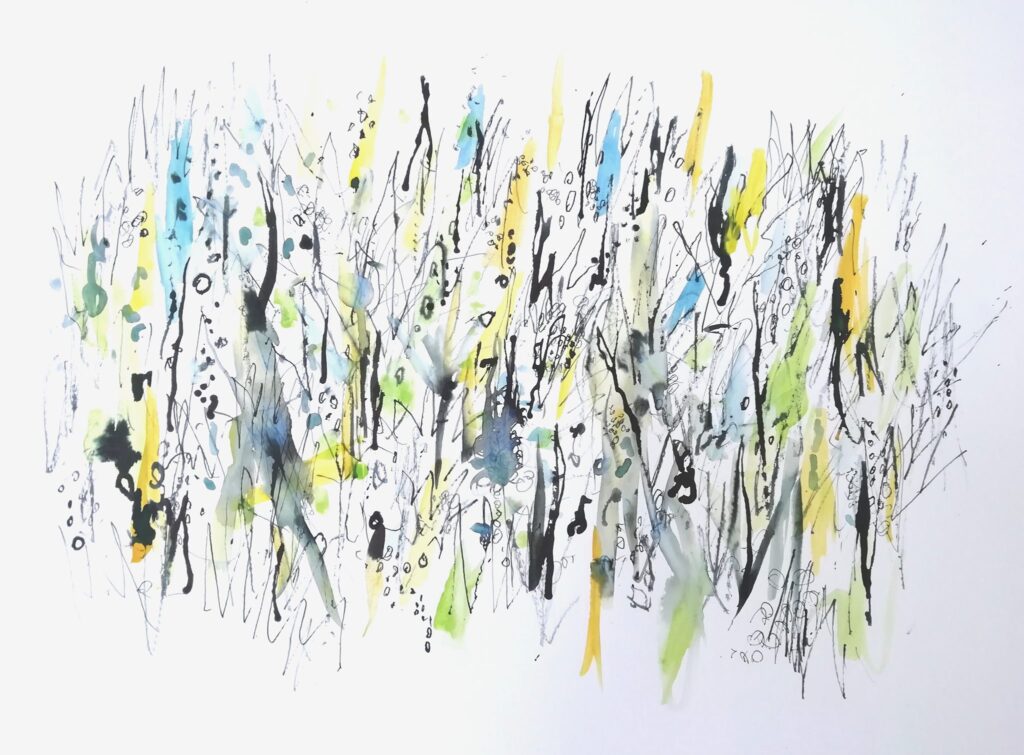
I decided to post a picture of the finished work on social media. At the time I wasn’t entirely sure how I felt about it as it was very different from my usual work, but I felt a sense of achievement at managing to do something creative and I was happy to find a focus to manage my anxieties. Immediately people responded with praise and likes and even offers to buy the work. As I usually work on projects and to commission I’m not used to selling my work in this way, so it was a bit surprising at first. However I was happy that people liked the work enough to buy it and I invited them to make an offer based on what they were able to pay.
This started a regular process of drawing patterns and marks. Whenever I began to feel overwhelmed I would start a drawing to record these feelings and channel them into a kind of meditative practice. After making a drawing, I often felt more calm and focused. I began to notice themes in the work and styles relating to other artists and illustrators. I created an album on Facebook to collate the work together and made more sales.
As I had now sold a number of the drawings, I also decided to join the #ArtistSupportPledge, a pledge to spend £200 on another artist’s work, if I sold £1000 worth of my own. That way, I would be able to contribute to the artist community and treat myself to some artwork too.
After 12 weeks of lockdown, I’m finally starting to find a sense of rhythm and structure to my days and my creativity is slowly beginning to return, but I’m continuing to create these drawings, to give myself the time and space to just focus on responding to the last mark and colour on the page and nothing else.
Website: www.louiseatkinson.co.uk
Twitter: @loubietheartist
Instagram: @loubietheartist
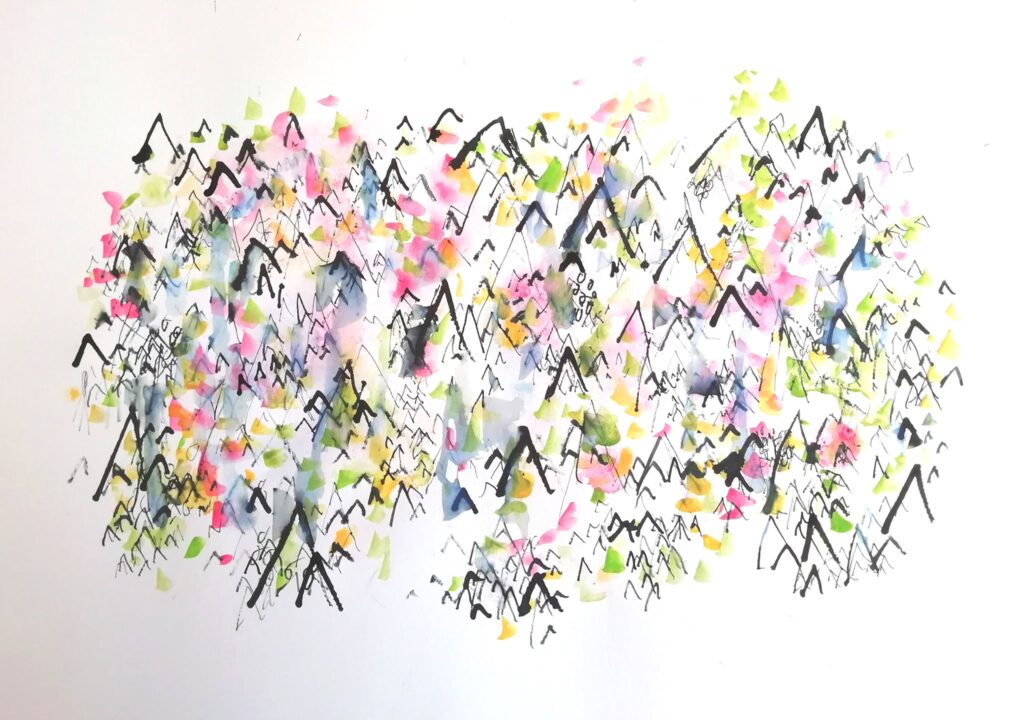
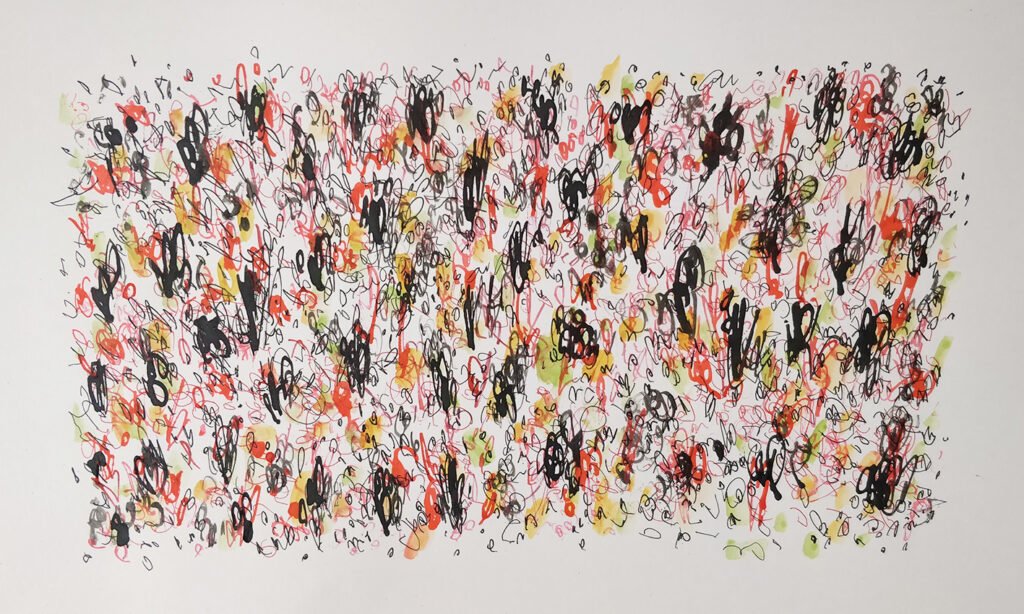
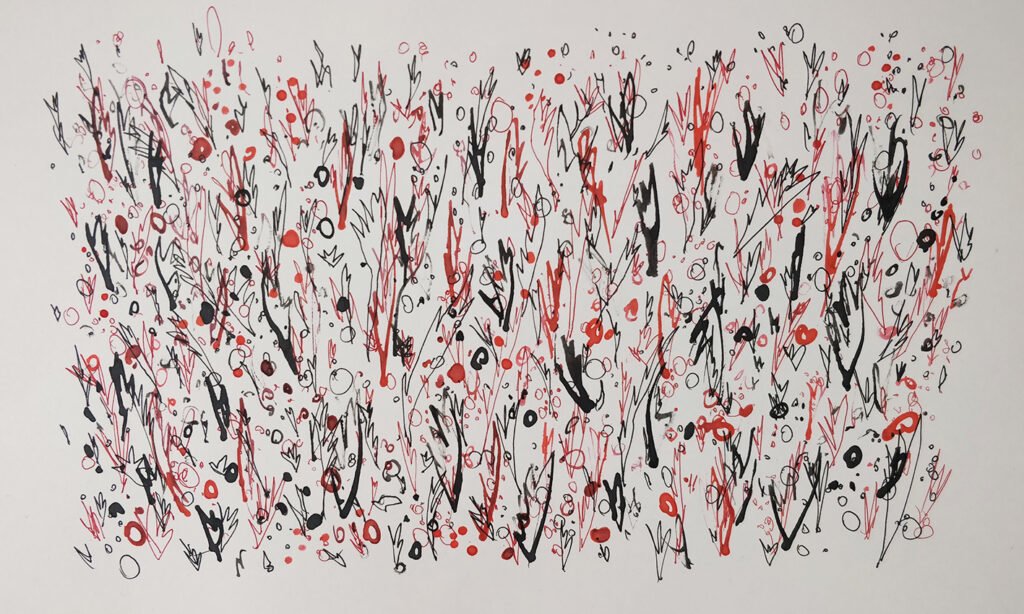
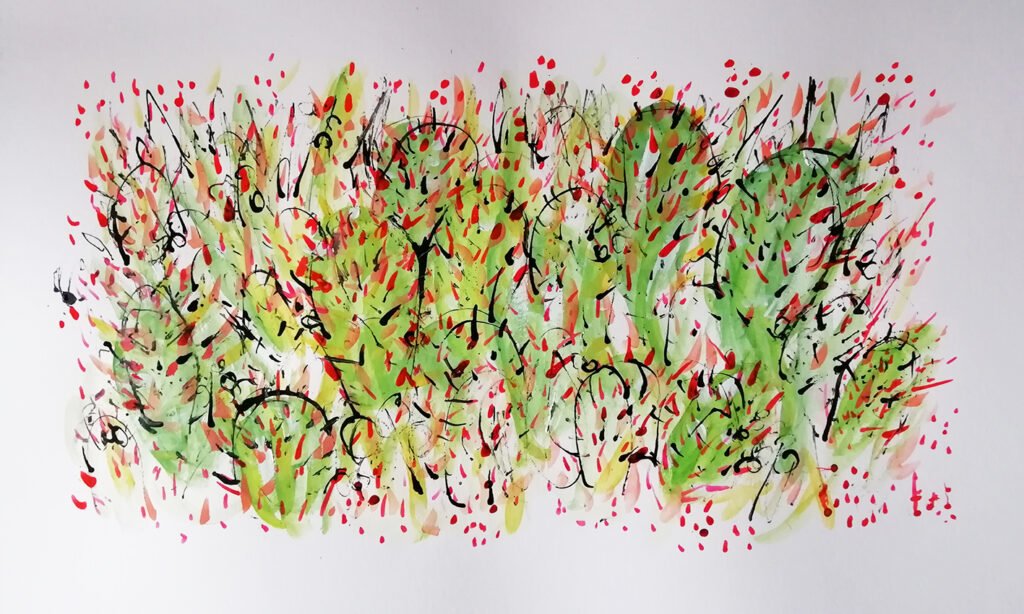
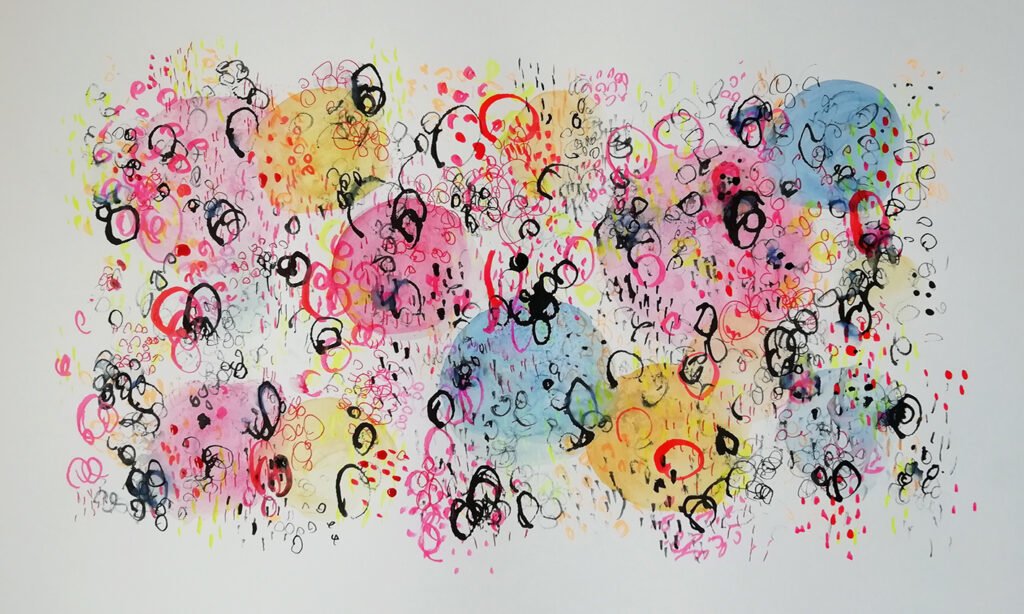
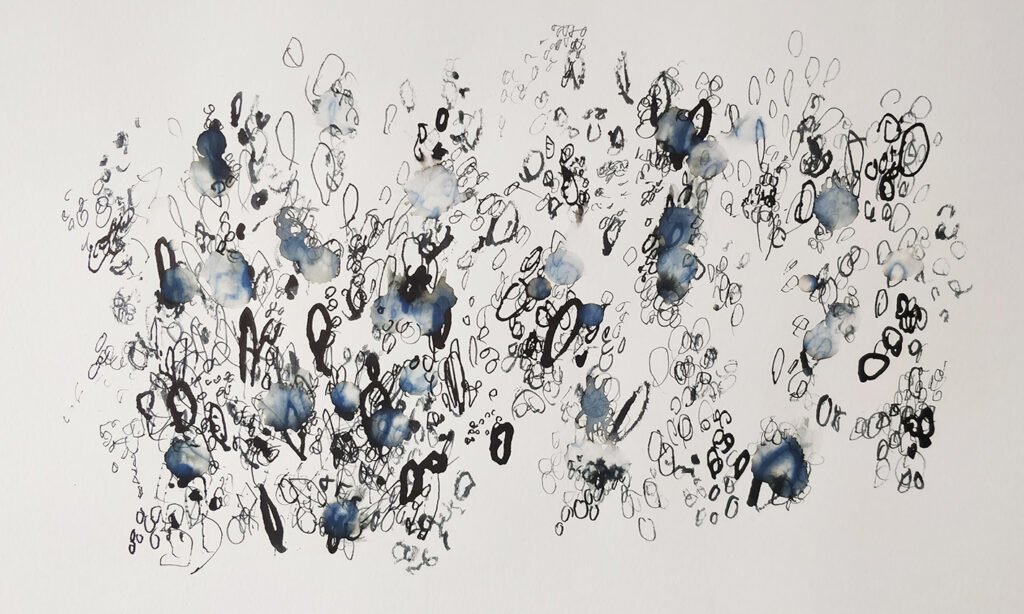
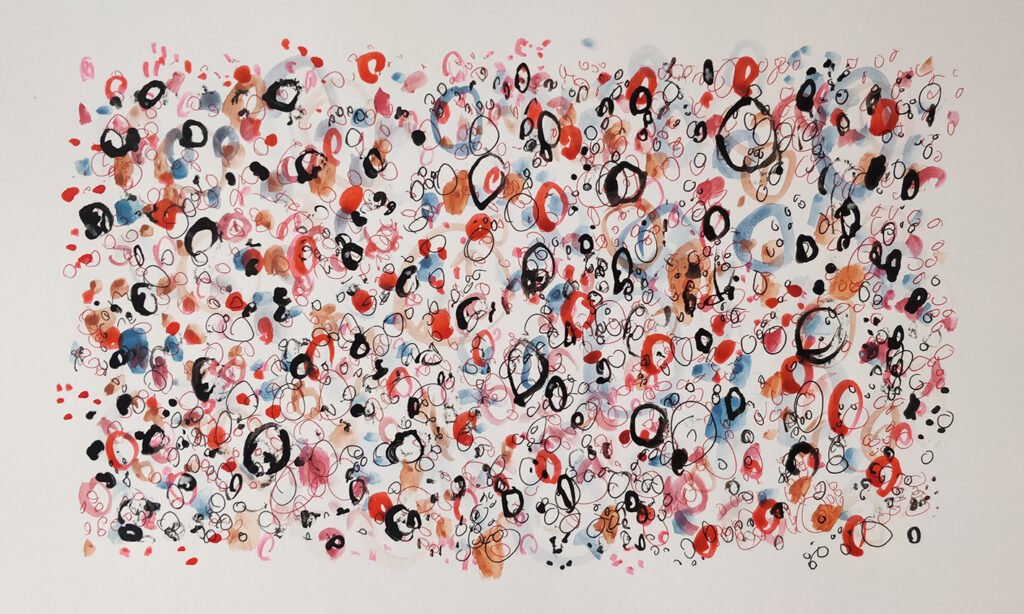
Filed under: SeeHearRead
Tagged with: artist, covid-19, creativity, drawing, exhibition, ink, lockdown, louise atkinson, markmarking, marks, online, see hear read, visual, watercolour
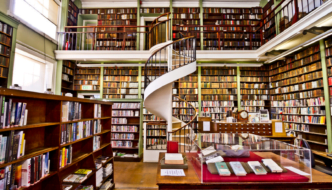
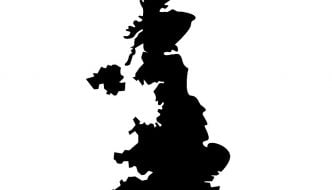
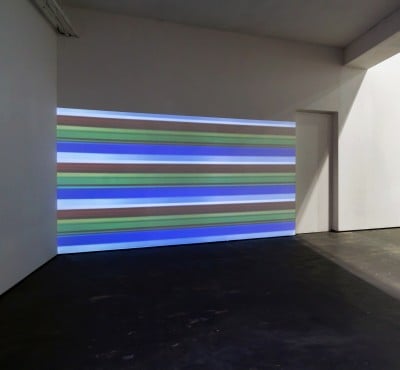
Comments